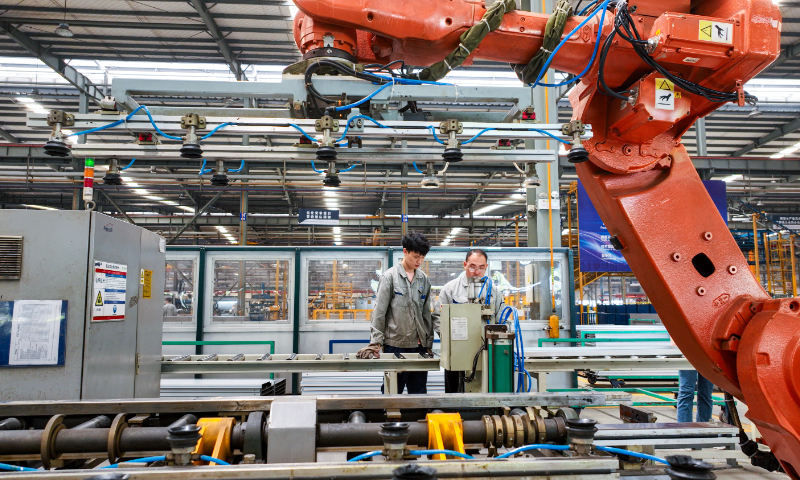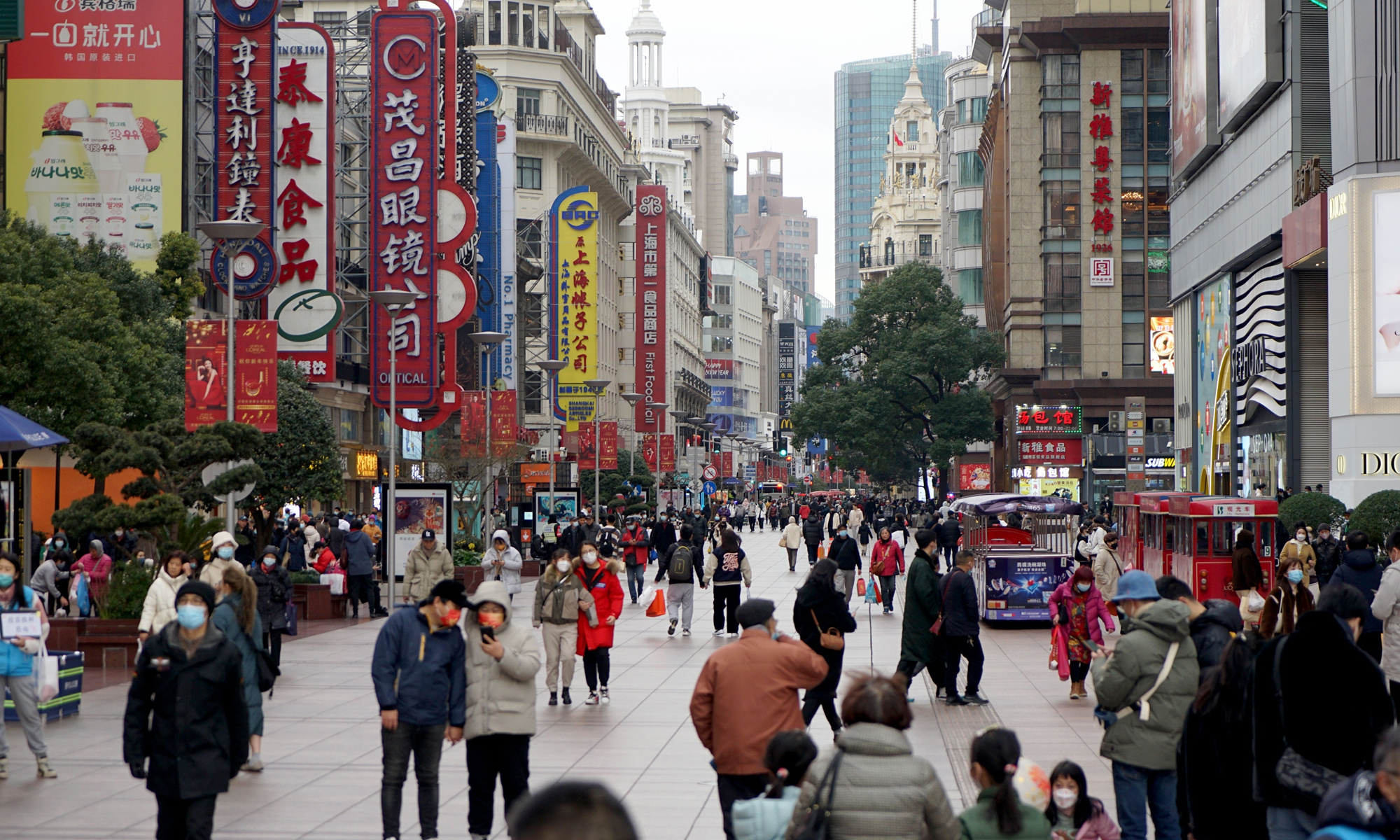Private-sector manufacturing activity growth fastest in 2 years in May; stability ‘expected’ for Q2

Workers use a smart robotic arm as they race to finish an elevator order that will be shipped overseas, in a factory of YidaExpress Elevator Co in Huzhou, East China's Zhejiang Province, on May 29, 2024. The elevator company now exports its products to more than 70 countries and regions. Photo: VCG
The Chinese economy is expected to post steady gains in the second quarter, with GDP growth on par with the first quarter of about 5.3 percent, analysts said on Monday after the release of statistics signaling an upward trajectory.
Although under pressure from a still-recovering property sector, the Chinese economy is harnessing fresh momentum from a wide range of supportive policies announced in the second quarter, including large-scale support to the housing sector, the issuance of ultra-long government bonds and the implementation of billions of dollars worth of equipment upgrades and trade-in programs.
In one positive sign, the private-sector purchasing managers index (PMI) for the manufacturing sector released by Caixin hit 51.7 in May 2024, the highest level since July 2022. The reading, which was up 0.3 points from April, indicated gains in vitality across the nation's massive number of small and mid-sized manufacturing firms.
The Caixin PMI was released after the official manufacturing PMI announced on Friday, which fell into negative territory at 49.5. An official with the National Bureau of Statistics (NBS) said that the reading was affected by a relatively high base and lack of effective demand.
However, Chinese economists reaffirmed that the general outlook for the economy is one that is firmly on a recovery track, as shown by a raft of data released in recent days.
Data from the China Federation of Logistics and Purchasing on May 29 showed that in the January-April period, social logistics revenue rose 6.1 percent year-on-year to 111.9 trillion yuan, speeding up from growth of 5.9 percent in the first quarter.
Analysts said that while growth in the first quarter was primarily driven by a rebounding manufacturing sector, investment, consumption and exports will be more balanced in their contributions to GDP growth during the second quarter.
"Major improvements in investment, consumption and trade amid the country's economic revival point to a steady recovery, with the effects of consequential supportive policies that were rolled out in the quarter starting to kick in," Li Chang'an, a professor at the Academy of China Open Economy Studies of the University of International Business and Economics, told the Global Times on Monday.
Some readings may reveal that more should be done to fully revitalize the economy, but the overall picture is quite solid, Li said.
Wang Peng, an associate researcher at the Beijing Academy of Social Sciences, told the Global Times on Monday that supportive policies in the second quarter are expected to further boost market vitality, and fuel growth in consumption and investment.
The impact of supportive policies will be felt more keenly in the vehicle, consumer electronics and home appliance sectors, boosting sales and industrial upgrades for suppliers.
The IMF on Wednesday raised China's GDP growth forecast for 2024 to 5 percent, up 0.4 percentage points from its World Economic Outlook report released in April.
In recent weeks, cities across China have rolled out supportive policies for the property sector, easing housing curbs and lowering thresholds to allow easier purchases of real estate, while homebuyers enjoy better terms in getting loans.
A number of Chinese localities, including economic hubs Shanghai and Shenzhen in South China's Guangdong Province, announced programs on Friday to encourage and provide incentives for industrial equipment upgrades and trade-ins.
The Shanghai Municipal Economic and Informatization Commission published a plan to push large-scale upgrades and expand the use of innovative products in the municipality, with plans to invest a cumulative 400 billion yuan for upgrades of industrial equipment by 2027.
Shenzhen kicked off a city-wide upgrade and consumer goods trade-in program, with 1 billion yuan in designated funds to propel enterprises making technological upgrades.
In addition, two batches of ultra-long special treasury bonds were issued during the quarter and were warmly received by the market, according to media reports.
Experts said such funds, mainly to be used for key projects and long-term investment, will provide growth momentum for the economy over the medium- and long-term.
The frontloading of supportive fiscal policy, stabilizing policies for the housing sector, resilient trade data and a low base effect will underpin second-quarter GDP data, Zhou Maohua, an economist at China Everbright Bank, told the Global Times on Monday.
The indicators suggest that the momentum of the economic recovery is unstoppable, Li said, and the second-quarter GDP growth rate will be about the same as in the first quarter, when it was 5.3 percent.
The economy's recovery will be consolidated with the implementation of these supportive policies, and consumption will provide more support for growth, Wang said.
"However, the government needs to pay close attention to changes in external demand amid the complex global geopolitical situation and the effectiveness of current policies," Wang said.




